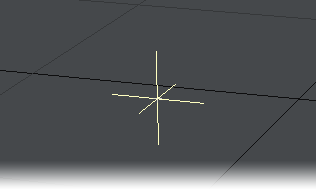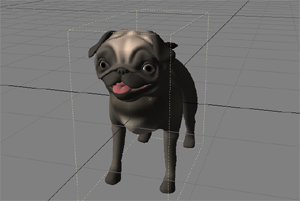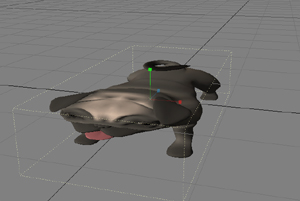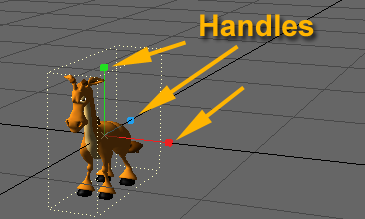Transform Group
Size
(default keyboard shortcut Shift H)
You can scale an object (but not Distant lights, Point lights, Spotlights or cameras) using the Size tool (Modify > Transform > Size). Size scales your object proportionately along all axes around its pivot point.
Linear and Area Lights can be Scaled.
When you Size an object, it is scaled equally along all axes. Dragging left will make it smaller and dragging right will make it bigger.
Stretch
(default keyboard shortcut H)
You can Stretch an object (but not Distant lights, Point lights, Spotlights or cameras) using the Stretch function (Modify > Transform > Stretch). Stretch lets you scale each axis of an object independently around its pivot point.
Linear and Area Lights can be stretched. Increased size for these types of lights also changes the softness of shadows.
When you Stretch an object, your mouse movements affect the following axes:
| Movement | Stretch |
|---|---|
| Left/Right LMB | X axis |
| Up/Down LMB | Z axis |
| Left/Right RMB | Y axis |
Squash
The Squash tool (Modify > Transform > Squash) is similar to the Stretch tool; however, when one of the scale channels is modified, the other two channels are automatically adjusted to preserve the object’s volume. Squash lets you scale each axis of an object independently around its pivot point.
Linear and Area Lights can be squashed.
Use the handles shown to perform a squash operation.
Add to Scale
You can numerically add to Scale values by using Add to Scale (Modify > Transform > Add to Scale). It works like editing the input fields in the lower-left corner of Layout, but adds to the existing values instead of replacing them.




